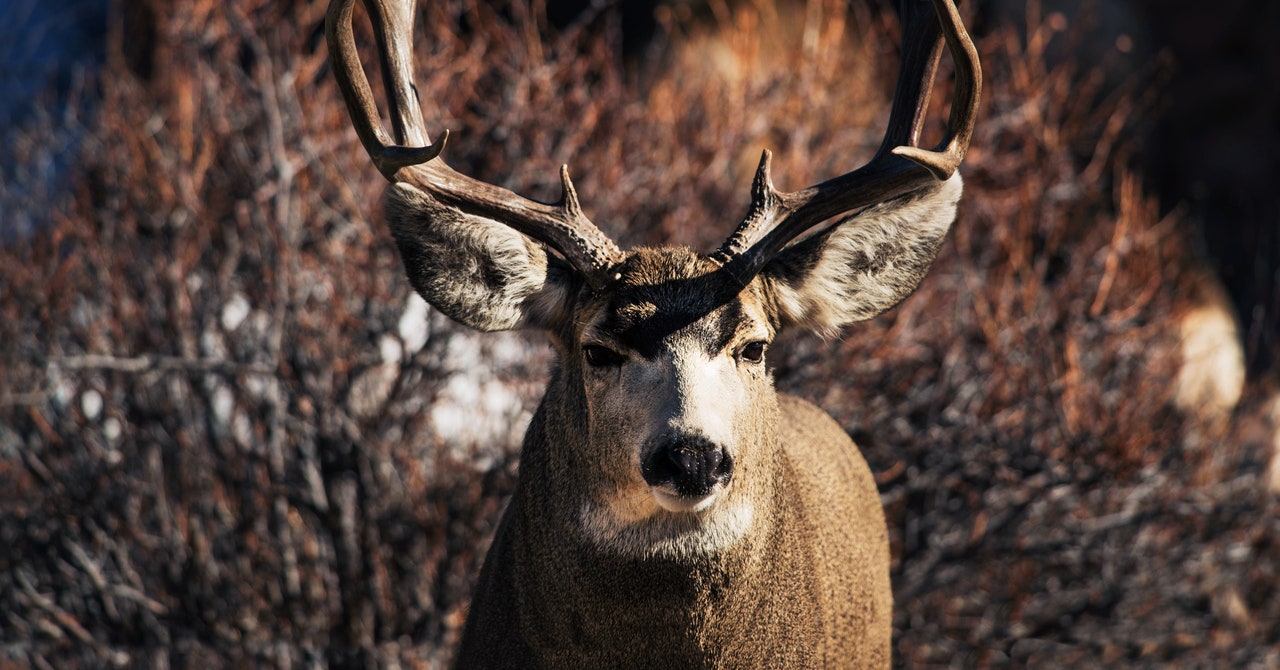In general, it’s surprising how little ecologists know about why large animals choose their migration paths. The motivations for moving are obvious, and include things like food, water, and a safe place to raise young. But how herds or animals learn their routes is a major debate. Evolution plays some role. There are signs of genetic predisposition in birds, for example, which may grow restless in their cages when the seasons change, even if they have always lived in captivity, and in insects like the monarch butterfly, which takes the same path for Mexico each year. But in mammals, that kind of genetic programming is harder to see. Their movements seem more heavily influenced by the particulars of their environment, and what behaviors they’ve learned from the generation before them. A young mule deer, for example, will learn the path taken by its mother down to the meter.
Recent research has bolstered the idea that hooved animals like mule deer develop these migratory routes in part by surfing the green wave. In maximizing their daily calories, they learn how to move with the seasons. Attempts to repopulate the American West with bighorn sheep offered a natural experiment for the idea, because the animals transported in to do the repopulating had no particular mental map of their new habitat. Initially, they preferred to stay put, a team of Wyoming-based researchers found. But gradually, the spring shoots proved irresistible, and they began to draw the animals out to explore new territory. Over time, they became better surfers, and those migratory routes were then passed on to their young.
The results of the mule deer study indicate that once animals have learned an ideal path, it can be hard for them to shake. And therefore, any sort of obstruction presents a problem, as researchers have found in prior studies. “The animals that migrate the longest distances and are the best surfers consistently have the highest body fat,” Aikens says. “Those are the ones that are most likely to survive the harsh winter.” The research team next plans to capture some of the animals involved in the study and measure the thickness of their fat using an ultrasound machine.
The results hold lessons for the sustained effects of development on other migratory species. That includes caribou, for example, which Hebblewhite studies in Canada’s far north. While somewhat better at changing up their routes, he says, they still face declining populations as immense mining and fossil fuel operations create a thicket of obstacles along their paths.
To Hebblewhite, the Wyoming findings highlight the importance of factoring in migration patterns when considering development—not only for oil and gas, but also for clean energy installations like solar farms. While those routes may at times be inconvenient for developers, not all is lost, he points out. The majority of the deer preferred to walk through the two gas sites that appear in the study, but the maps of migratory paths show plenty of empty land where no deer roam. A developer could put wells there and drill laterally to reach the natural gas underneath the migration paths, he says: “This paper highlights that you could have avoided their routes. It doesn’t mean you have to shut down everything.”
As more GPS data becomes available, animals’ surfing routes are already increasingly being taken into account in development decisions, Hebblewhite adds. State and local governments are often receptive, he says, due to the importance of hunting to local residents and a growing understanding of the interconnectedness of ecosystems—that if you care about the natural wonders of Yellowstone, you may have to also care about what happens to a mule deer in the scrubby sagebrush flats hundreds of miles away. The challenge, Aikens adds, is getting this kind of detailed data for more animals and in other parts of the landscape where people may want to build. “It’s surprising how little information is available in many places,” she says. “That’s something that there’s an active effort to change.”
